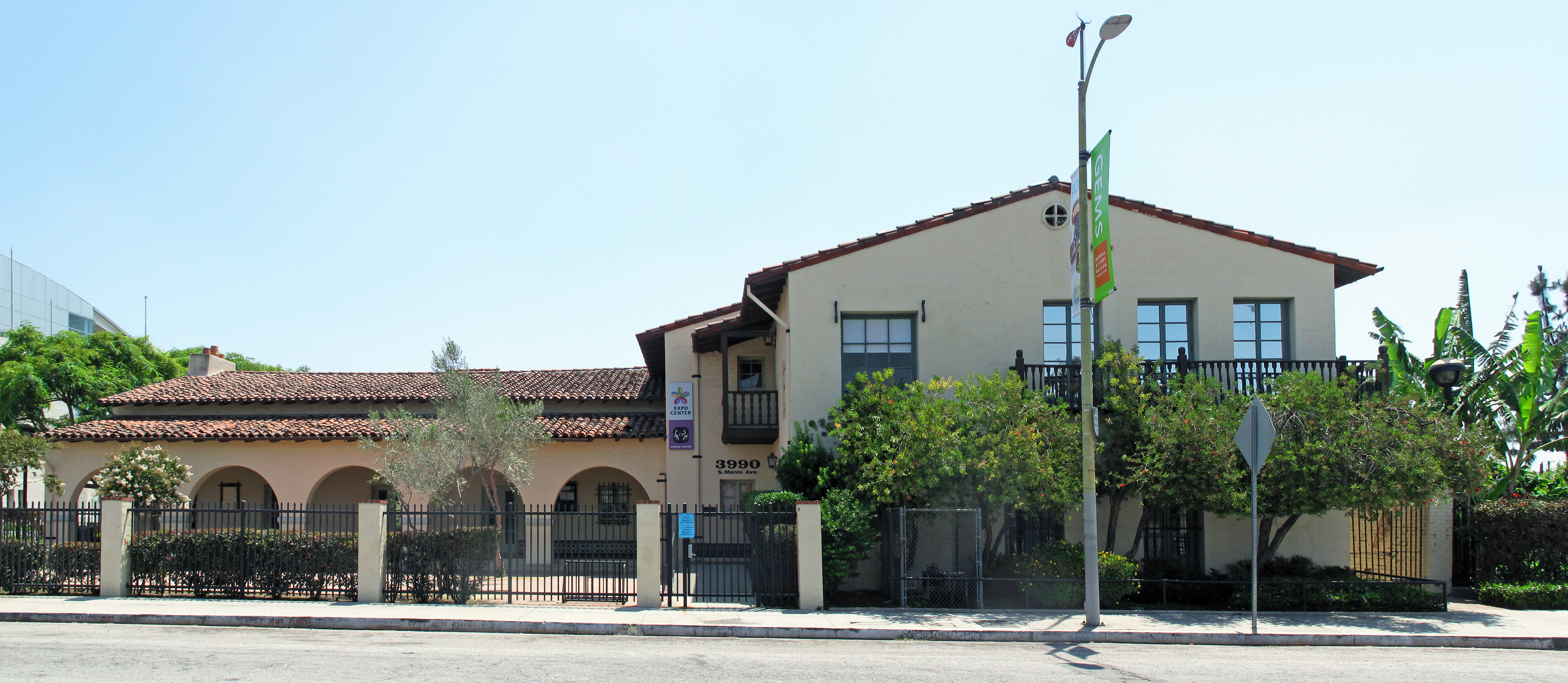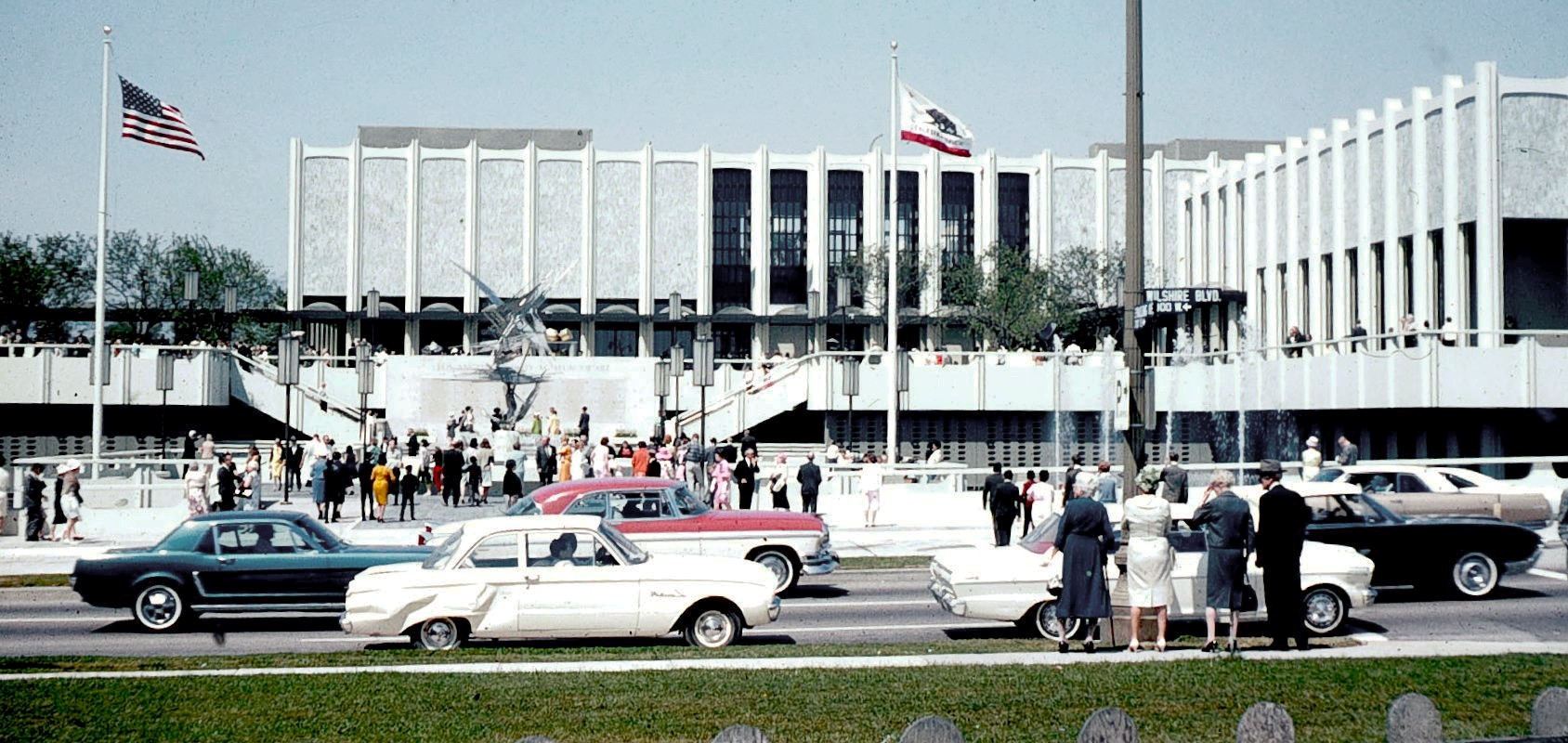|
Natural History Museum Of Los Angeles County
The Natural History Museum of Los Angeles County is the largest natural and historical museum in the western United States. Its collections include nearly 35 million specimens and artifacts and cover 4.5 billion years of history. This large collection is comprised not only of specimens for exhibition, but also of vast research collections housed on and offsite. The museum is associated with two other museums in Greater Los Angeles: the Page Museum at the La Brea Tar Pits in Hancock Park and the William S. Hart Ranch and Museum in Newhall. The three museums work together to achieve their common mission: "to inspire wonder, discovery, and responsibility for our natural and cultural worlds." History NHM opened in Exposition Park, Los Angeles, California, United States in 1913 as The Museum of History, Science, and Art. The moving force behind it was a museum association founded in 1910. Its distinctive main building with fitted marble walls and domed and colonnaded rotu ... [...More Info...] [...Related Items...] OR: [Wikipedia] [Google] [Baidu] |
Exposition Park (Los Angeles)
Exposition Park is a in the south region of Los Angeles, California, in the Exposition Park neighborhood. Established in 1872 as an agricultural fairground, the park includes the Los Angeles Memorial Coliseum, Banc of California Stadium, the California Science Center, the Natural History Museum of Los Angeles County, and the California African American Museum. The Lucas Museum of Narrative Art is under construction. Bounded by Exposition Boulevard to the north, South Figueroa Street to the east, Martin Luther King Jr. Boulevard to the south and Vermont Avenue to the west, it is directly south of the main campus of the University of Southern California. The park is public open space, managed by the Sixth District Agricultural Association. Features Exposition Park houses the following: * LA84 Foundation/John C. Argue Swim Stadium * Banc of California Stadium ** Home of Los Angeles FC * Lucas Museum of Narrative Art (under construction) * Los Angeles Memorial Co ... [...More Info...] [...Related Items...] OR: [Wikipedia] [Google] [Baidu] |
Greater Los Angeles
Greater Los Angeles is the second-largest metropolitan region in the United States with a population of 18.5 million in 2021, encompassing five counties in Southern California extending from Ventura County in the west to San Bernardino County and Riverside County in the east, with Los Angeles County in the center and Orange County to the southeast. According to the U.S. Census Bureau, the Los Angeles–Anaheim–Riverside combined statistical area covers , making it the largest metropolitan region in the United States by land area. Of this, the contiguous urban area is , the remainder mostly consisting of mountain and desert areas. In addition to being the nexus of the global entertainment industry (films, television, and recorded music), Greater Los Angeles is also an important center of international trade, education, media, business, tourism, technology, and sports. It is the 3rd largest metropolitan area by nominal GDP in the world with an economy exceeding $1 tr ... [...More Info...] [...Related Items...] OR: [Wikipedia] [Google] [Baidu] |
Triceratops Mount
''Triceratops'' ( ; ) is a genus of herbivorous chasmosaurine ceratopsid dinosaur that first appeared during the late Maastrichtian stage of the Late Cretaceous period, about 68 million years ago in what is now North America. It is one of the last-known non-avian dinosaur genera, and became extinct in the Cretaceous–Paleogene extinction event 66 million years ago. The name ''Triceratops'', which literally means 'three-horned face', is derived from the Greek words () meaning 'three', () meaning 'horn', and () meaning 'face'. Bearing a large bony frill, three horns on the skull, and a large four-legged body, exhibiting convergent evolution with rhinoceroses and bovines, ''Triceratops'' is one of the most recognizable of all dinosaurs and the most well-known ceratopsid. It was also one of the largest, up to long and in body mass. It shared the landscape with and was most likely preyed upon by ''Tyrannosaurus'', though it is less certain that two adults did battl ... [...More Info...] [...Related Items...] OR: [Wikipedia] [Google] [Baidu] |
Los Angeles County Museum Of Natural History - Hall Of African Mammals
LOS, or Los, or LoS may refer to: Science and technology * Length of stay, the duration of a single episode of hospitalisation * Level of service, a measure used by traffic engineers * Level of significance, a measure of statistical significance * Line-of-sight (other) * LineageOS, a free and open-source operating system for smartphones and tablet computers * Loss of signal ** Fading **End of pass (spaceflight) * Loss of significance, undesirable effect in calculations using floating-point arithmetic Medicine and biology * Lipooligosaccharide, a bacterial lipopolysaccharide with a low-molecular-weight * Lower oesophageal sphincter Arts and entertainment * ''The Land of Stories'', a series of children's novels by Chris Colfer * Los, or the Crimson King, a character in Stephen King's novels * Los (band), a British indie rock band from 2008 to 2011 * Los (Blake), a character in William Blake's poetry * Los (rapper) (born 1982), stage name of American rapper Carlos Col ... [...More Info...] [...Related Items...] OR: [Wikipedia] [Google] [Baidu] |
Wilshire Boulevard
Wilshire Boulevard is a prominent boulevard in the Los Angeles area of Southern California, extending from Ocean Avenue in the city of Santa Monica east to Grand Avenue in the Financial District of downtown Los Angeles. One of the principal east-west arterial roads of Los Angeles, it is also one of the major city streets through the city of Beverly Hills. Wilshire Boulevard runs roughly parallel with Santa Monica Boulevard from Santa Monica to the west boundary of Beverly Hills. From the east boundary it runs a block south of Sixth Street to its terminus. Wilshire Boulevard is densely developed throughout most of its span, connecting five of Los Angeles's major business districts and Beverly Hills to one-another. Many of the post-1956 skyscrapers in Los Angeles are located along Wilshire; for example, the Wilshire Grand Center, which is the tallest building in California, is located on the Figueroa and Wilshire intersection. One Wilshire, built in 19 ... [...More Info...] [...Related Items...] OR: [Wikipedia] [Google] [Baidu] |
Los Angeles County Museum Of Art
The Los Angeles County Museum of Art (LACMA) is an art museum located on Wilshire Boulevard in the Miracle Mile vicinity of Los Angeles. LACMA is on Museum Row, adjacent to the La Brea Tar Pits (George C. Page Museum). LACMA was founded in 1961, splitting from the Los Angeles Museum of History, Science and Art. Four years later, it moved to the Wilshire Boulevard complex designed by William Pereira. The museum's wealth and collections grew in the 1980s, and it added several buildings beginning in that decade and continuing in subsequent decades. In 2020, four buildings on the campus were demolished to make way for a reconstructed facility designed by Peter Zumthor. His design drew strong community opposition and was lambasted by architectural critics and museum curators, who objected to its reduced gallery space, poor design, and exorbitant costs. LACMA is the largest art museum in the western United States. It attracts nearly a million visitors annually. It holds more than 15 ... [...More Info...] [...Related Items...] OR: [Wikipedia] [Google] [Baidu] |
The National Register Of Historic Places
The National Register of Historic Places (NRHP) is the United States federal government's official list of districts, sites, buildings, structures and objects deemed worthy of preservation for their historical significance or "great artistic value". A property listed in the National Register, or located within a National Register Historic District, may qualify for tax incentives derived from the total value of expenses incurred in preserving the property. The passage of the National Historic Preservation Act (NHPA) in 1966 established the National Register and the process for adding properties to it. Of the more than one and a half million properties on the National Register, 95,000 are listed individually. The remainder are contributing resources within historic districts. For most of its history, the National Register has been administered by the National Park Service (NPS), an agency within the U.S. Department of the Interior. Its goals are to help property owners and inte ... [...More Info...] [...Related Items...] OR: [Wikipedia] [Google] [Baidu] |
United States
The United States of America (U.S.A. or USA), commonly known as the United States (U.S. or US) or America, is a country primarily located in North America. It consists of 50 U.S. state, states, a Washington, D.C., federal district, five major unincorporated territories, nine United States Minor Outlying Islands, Minor Outlying Islands, and 326 Indian reservations. The United States is also in Compact of Free Association, free association with three Oceania, Pacific Island Sovereign state, sovereign states: the Federated States of Micronesia, the Marshall Islands, and the Palau, Republic of Palau. It is the world's List of countries and dependencies by area, third-largest country by both land and total area. It shares land borders Canada–United States border, with Canada to its north and Mexico–United States border, with Mexico to its south and has maritime borders with the Bahamas, Cuba, Russia, and other nations. With a population of over 333 million, it is the List of ... [...More Info...] [...Related Items...] OR: [Wikipedia] [Google] [Baidu] |
Antonio Coronel
Don Antonio Francisco Coronel (October 21, 1817 – April 17, 1894) was a Californio politician and ranchero who was Mayor of Los Angeles and California State Treasurer. Coronel was considered one of the first preservationists in Los Angeles, and his private collection formed the basis of the Natural History Museum of Los Angeles County. Career Antonio Francisco Coronel was the son of Ygnacio Coronel, born in Mexico City in the last years of colonial New Spain. Coronel was 17 years of age when he came to Alta California with his parents in 1834, as a part of the Híjar-Padrés Colony. In 1838, he was appointed Assistant Secretary of Tribunals for the Pueblo de Los Ángeles. In 1843, he became Justice of the Peace (''Juez de Paz'', the equivalent of Mayor at that time). During the Mexican–American War in 1846–47, Antonio was a captain and sergeant-at-arms in the Mexican artillery and took part in military operations against the United States. Once the war had ended, Antonio ... [...More Info...] [...Related Items...] OR: [Wikipedia] [Google] [Baidu] |
Newhall, Santa Clarita, California
Newhall is the southernmost and oldest community in the city of Santa Clarita, California. Prior to the 1987 consolidation of Canyon Country, Saugus, Newhall, and Valencia into the city of Santa Clarita, it was an unincorporated area. It was the first permanent town in the Santa Clarita Valley. History The Tataviam village of Tochonanga was located at the area where Newhall stands today. Fifty villagers were brought to Mission San Fernando from 1797 to 1811. Descendants of the village continued to live in the Newhall area. Named after businessman Henry Mayo Newhall, Newhall is home to the William S. Hart County Park, featuring tours of the famous silent movie maker's mansion. Newhall is also home to the Pioneer Oil Refinery (California Historical Landmark, No. 172), the oldest surviving oil refinery in the world and the first commercially successful refinery in California. Over the years, Newhall has been the location for many movies, including '' Suddenly'' (1954) and ... [...More Info...] [...Related Items...] OR: [Wikipedia] [Google] [Baidu] |








.jpg)